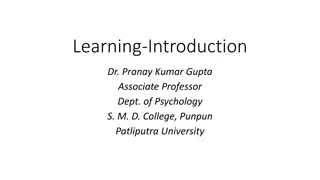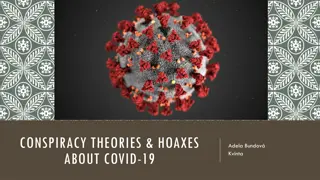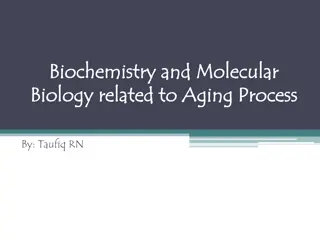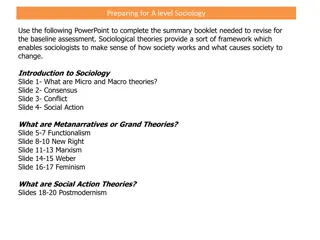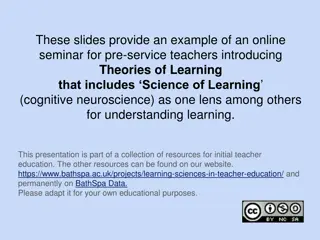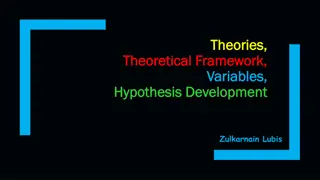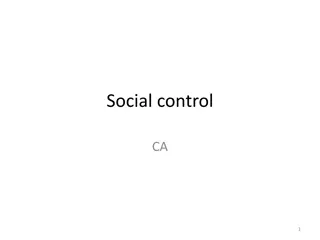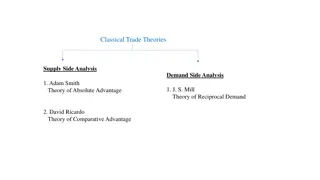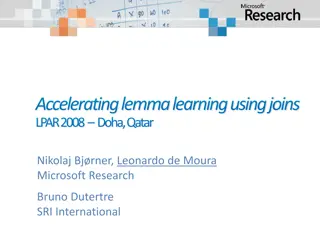Understanding Social Learning Theories and Control Mechanisms
Exploring various social learning theories such as Differential Association Theory and Social Control Theory, which explain how individuals learn deviant behavior and how society enforces norms through social control mechanisms like sanctions and formal/informal sanctions.
Download Presentation

Please find below an Image/Link to download the presentation.
The content on the website is provided AS IS for your information and personal use only. It may not be sold, licensed, or shared on other websites without obtaining consent from the author. Download presentation by click this link. If you encounter any issues during the download, it is possible that the publisher has removed the file from their server.
E N D
Presentation Transcript
SOCIAL LEARNING THEORIES DIFFERENTIAL ASSOCIATION DIFFERENTIAL ASSOCIATION THEORY THEORY DIFFERENTIAL ASSOCIATION DIFFERENTIAL ASSOCIATION- - REINFORCEMENT THEORY REINFORCEMENT THEORY DIFFERENTIAL DIFFERENTIAL IDENTIFICATION THEORY IDENTIFICATION THEORY
DIFFERENTIAL ASSOCIATION THEORY Edwin Sutherland (1939) Differential Association Theory - individuals learn deviant behavior from those close to them who provide models of and opportunities for deviance. Deviance is less a personal choice and more a result of differential socialization processes. Ex: a tween whose friends are sexually active is more likely to view sexual activity as acceptable (Reference #2) (Attribution #2)
SOCIAL CONTROL THEORIES Social Control Theory Labeling Theory The Theory of Dramaturgy
SOCIAL CONTROL (1 OF 3) All societies practice social control An organized action intended to change people s behavior through the regulation and enforcement of norms. Goal of social control is to maintain social order An arrangement of practices and behaviors on which society s members base their daily lives. (Reference #2) (Attribution #5)
SOCIAL CONTROL (2 OF 3) One means of enforcing rules are through sanctions. Positive sanctions are rewards given for conforming to norms. Promotion at work Negative sanctions are punishments for violating norms. Being arrested is a punishment for shoplifting. (Reference #2) (Attribution #3)
SOCIAL CONTROL (3 OF 3) Informal sanctions not against the law, but not approved by society Nose-picking Receive disapproving looks or verbal reprimands Formal sanctions are ways to officially recognize and enforce norm violations Plagiarizing, saving a life Expelled, medal (References #2) (Attribution #4)
SOCIAL CONTROL THEORY (1 OF 4) Travis Hirschi (1969) SOCIAL CONTROL THEORY - Delinquency results when an individual fails to become bound to the social order, or when the bond which a person forms becomes diminished, freeing the individual to engage in law-breaking behavior. (Reference #1) (Attribution #6)
SOCIAL CONTROL THEORY (2 OF 4) The four elements of the bond which Hirschi believed are related to socialization are 1) Attachment 2) Commitment 3) Involvement 4) Belief (Reference #1) (Attribution #7)
SOCIAL CONTROL THEORY (3 OF 4) Delinquency and attachment should be measured directly by studying the extent to which attachments to significant others have been developed. Commitment - the investment which a person makes in conventional behavior which would be lost if he or she were to decide to break the law Positive attitudes towards work, education and adult life lack of commitment is an alternative situation in which youths refrain from working on their education through which they can achieve high status adult work roles. (Reference #1)
SOCIAL CONTROL THEORY (4 OF 4) Involvement is related to the incapacitation of the individual by engaging him or her in prosocial behavior so that he or she is unavailable to participate in law breaking behavior. Beliefs - "An agreement on common values in society." If a person views social values as beliefs, he or she will conform to them. (Reference #1 & 2) (Attribution #8)
SOCIAL CONTROL AS DISCIPLINE (1 OF 2) Michel Foucault (1979) Disciplinary social control - detailed continuous training, control, and observation of individuals to improve their capabilities: criminals into law abiding citizens children into educated and productive adults recruits into disciplined soldiers patients into healthy people renders individuals docile with disciplinary training simultaneously increases their abilities, skills, and usefulness while making them more compliant and manipulatable. (Reference #2)
SOCIAL CONTROL AS DISCIPLINE (2 OF 2) Surveillance refers to the various means used to make the lives and activities of individuals visible to authorities. Jeremy Bentham (1791) ideal prison Panopticon - prisoners cells would be arranged in a circle around a central observation tower where they could be both separated from each other and continually exposed to the view of prison guards. (Reference #2) (Attribution #1)
CRIMINAL PROFILE SOCIAL CONTROL THEORY ED GEIN(50 S) 1957 His entire family died within 4 years Inspiration for Buffalo Bill Robbed graves and killed at least one woman. Had a collection of used body parts to create furniture, ornaments, and clothing Social Control Theory would argue that based on Ed Gein s behavior after his parents death, the drastically weakening his attachment to society and its structure, and thus did it s structure. (Reference #4) (Attribution #10)
LABELING THEORY Labelling theory examines the ascribing of a deviant behavior to another person by members of society. What is considered deviant is determined not so much by the behaviors themselves or the people who commit them, but by the reactions of others to these behaviors. (Reference #2) (Attribution #9)
LABELING THEORY -TYPES OF DEVIANCE Secondary deviance occurs when a person s self-concept and behavior begin to change after his or her actions are labelled as deviant by members of society. Primary deviance is a violation of norms that does not result in any long-term effects on the individual s self-image or interactions with others. Edwin Lemert (1951) - two types of deviance that affect identity formation: Student who constantly skips class and gets in fights troublemaker Speeding (Reference #2)
CRIMINAL PROFILE LABELING THEORY ROB FORD (44) (2013) Mayor of Toronto Was videoed smoking crack cocaine Labeling Theory would argue that this is secondary deviance This image / label of being a powerful politician has changed to the label of a criminal. (Reference #3) (attribution #9)
DRAMATURGY Erving Goffman (1959) Dramaturgy - people are like actors on a stage using impression management to present ourselves to others as we hope to be perceived Compare how you act in front of the following: Coworker, teacher, grandparent, friend (Reference #2) (Attribution #10)
CRIMINAL PROFILE DRAMATURGY POGO THE CLOWN John Wayne Gacy (1972 1978) Gacy was well-liked in the community Seen as upstanding man, but he wasn t Gacy would lure his victims to his home by pretending to be a police officer or falsely promising them work in construction. Often times dressed as Pogo," he would drug and sexually assault his victims. He then strangled most of them and buried as many bodies as he could in the crawl space of his home. The Dramaturgical Perspective could help explain how Mr. Gacy was able to be active and mobile in the community while committing horrific crimes at horrific numbers. Link to Video (7:06) (Reference #5 & 6)
REFERENCES 1. https://pdxscholar.library.pdx.edu/cgi/viewcontent.cgi?article=1856&context=open_access_etds. 2. https://opentextbc.ca/introductiontosociology/chapter/chapter7-deviance-crime-and-social-control/ 3. http://time.com/4448803/rob-ford-crack-video-released/ 4. https://www.wausaudailyherald.com/story/news/2017/10/31/60-years-ago-true-story-ed-gein-played-out-wisconsin/816579001/ 5. https://www.insideedition.com/who-was-killer-clown-john-wayne-gacy-52448 6. https://www.youtube.com/watch?v=8oe7k32hwom KATIE CALI, INSTRUCTOR OF SOCIOLOGY AND CRIMINAL JUSTICE, AT NORTHSHORE TECHNICAL COMMUNITY COLLEGE. THIS WORK IS LICENSED UNDER THE CREATIVE COMMONS ATTRIBUTION (CC-BY) LICENSE. TO VIEW A COPY OF THE LICENSE, VISIT HTTPS://CREATIVECOMMONS.ORG/LICENSES/BY/4.0/







